For Greater Safety in Mobility – Jin-Ki Kanno x Jin-Ki Anzen

- Our initiatives to assist safety with Technologies, User Skills, and Connectivity to achieve our Jin-Ki Kanno × Jin-Ki Anzen Safety Vision
Jin-Ki Kanno is Yamaha Motor’s exclusive development ideal. Technology born from Jin-Ki Kanno seeks to deliver users the seductive exhilaration felt when they truly become one with their machine. Quantifying and fine-tuning this kind of exciting performance, which we call Kanno Seino, and then building it into our products is a solid part of our Yamaha Monozukuri framework, and this development style permeates all of our workplaces.
Jin-Ki Anzen expresses our belief that having people and machines work together in complementary ways can make more sophisticated safety skills and technologies possible. In order to create a safer world of personal mobility, Yamaha Motor will begin working to enhance the human–machine relationship in ways that bring growth and advancements to both.
Centering our efforts to elevate safety on technologies, user skills, and connectivity, the Jin-Ki Kanno × Jin-Ki AnzenSafety Vision expresses Yamaha Motor’s unique approach to create a world free of accidents together with our customers, in which users can experience the joy and Kando* that comes from progressing their own skills and abilities while having fun at the same time.
*Kando is a Japanese word for the simultaneous feelings of deep satisfaction and intense excitement that we experience when we encounter something of exceptional value.
Slight Upturn in Motorcycle-Related Deaths (1990–2020)
While deaths from car accidents are slowly declining, the number of fatalities from motorcycle-related accidents is showing a slight increase.
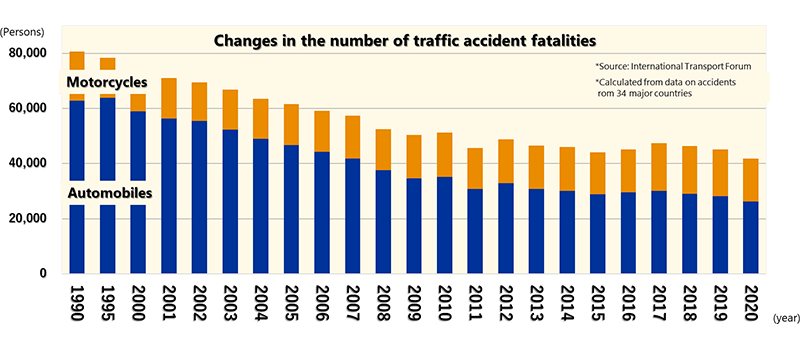
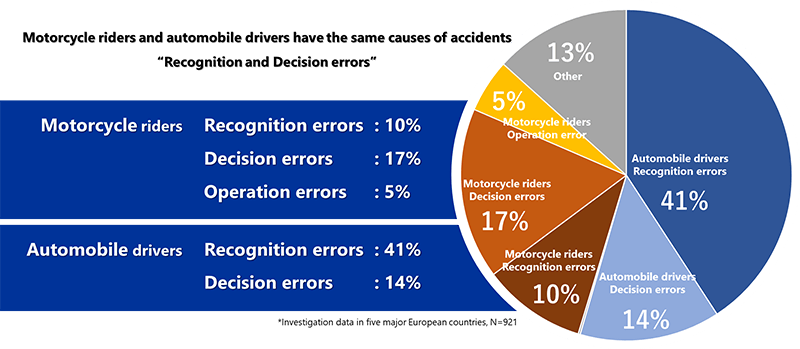
Causes of Motorcycle-Related Accide
Some 30% of motorcycle accidents are caused by error or negligence on the part of the rider, but over 50% are due to car driver error or negligence. The first step we must take is to eliminate errors by riders in identifying potential dangers, making sound judgments, and skillfully operating the motorcycle to avoid said dangers.
Furthermore, we must work to improve the conspicuity and recognition of motorcycles by car drivers. It is easy for motorcycles to enter the blind spots of cars and trucks, plus they often appear to be moving slower or are farther away than they actually are, and this leads to errors in driver recognition and decision.
Accidents Occur in a Flash and Successful Avoidance Takes Skill and Knowledge
From the moment the cause of a future motorcycle-related accident arises, 70% of them occur within just two seconds afterwards. We also know that the majority of riders are currently unable to make the right maneuvers to prevent the accident in such a short span of time. Additionally, it is no easy feat for a rider to do this properly while facing imminent danger. In these kinds of situations, instead of solely relying on user decision and skill to perform the right evasive maneuvers, it is essential that we try to help with rider-assistive technologies.

The Three Pillars Supporting Jin-Ki Kanno × Jin-Ki Anzen
Technologies
By creating systems that inform the rider of surrounding vehicles, traffic rules and conditions, or even predictions of potential risks, we can assist the rider’s own recognition of dangers and decision calls. And when riding at low speeds where a high sense of balance is needed, technology can assist the rider’s inputs to keep vehicle behavior stable and help in ascertaining the conditions of the surroundings. Furthermore, should an accident unfortunately occur, other systems can help to reduce damage or injury, such as deploying onboard rider protection devices or sending incident reports to emergency services automatically.
User Skills
We will grow the number of touchpoints we have with all our customers—in both the digital realm and the real world—and provide helpful opportunities to not only improve riding skills but also gain safety-related knowledge and experience while having fun along the way. To do this, we will continue our work through the Yamaha Riding Academy, but also introduce more on-demand and microlearning content so that customers can easily participate in riding safety classes.
Connectivity
We will emphatically raise the level of connectivity between riders and their vehicles, collect data on vehicle use and operating conditions, and aim to feed that information into more Jin-Ki (human–machine) safety initiatives.
Advanced Motorcycle Stability Assist SystemMotorcycle stabilization assist system using drive force and steering force control
Provides riders with security and comfort
Control technology that stabilizes the vehicle even at low speeds allows everyone to enjoy a sense of oneness with the machine in comfort and with peace of mind.
Electronic control system
- Equipped with 6-axis Inertial Measurement Unit along with drive and steering actuators. Achieves stabilization at low speeds
- Adopts a structure that is highly applicable to existing models without changing the frame

Skills
Safety Classes ExpansionExperiential-type safety program: Yamaha Riding Feedback System
Analyzes each rider’s riding conditions and provides feedback on points to improve
skills

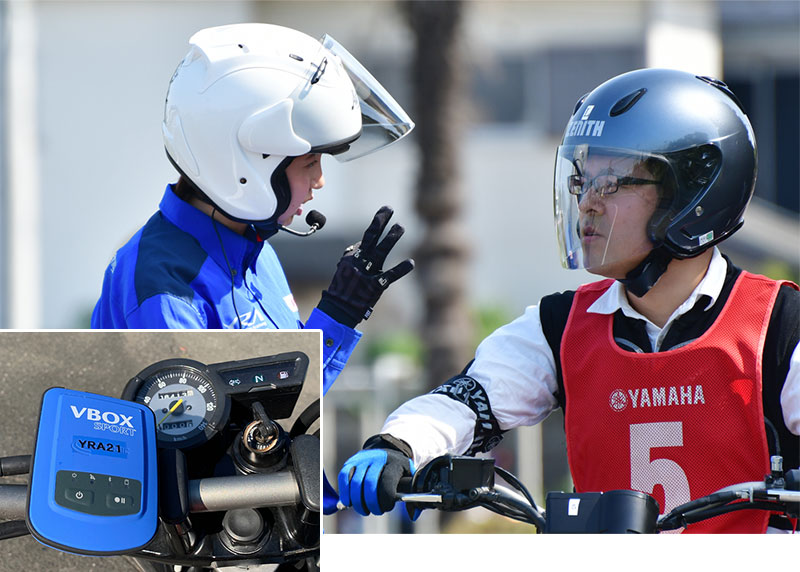
Connectivity
Connectivity Assist










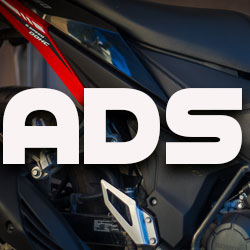








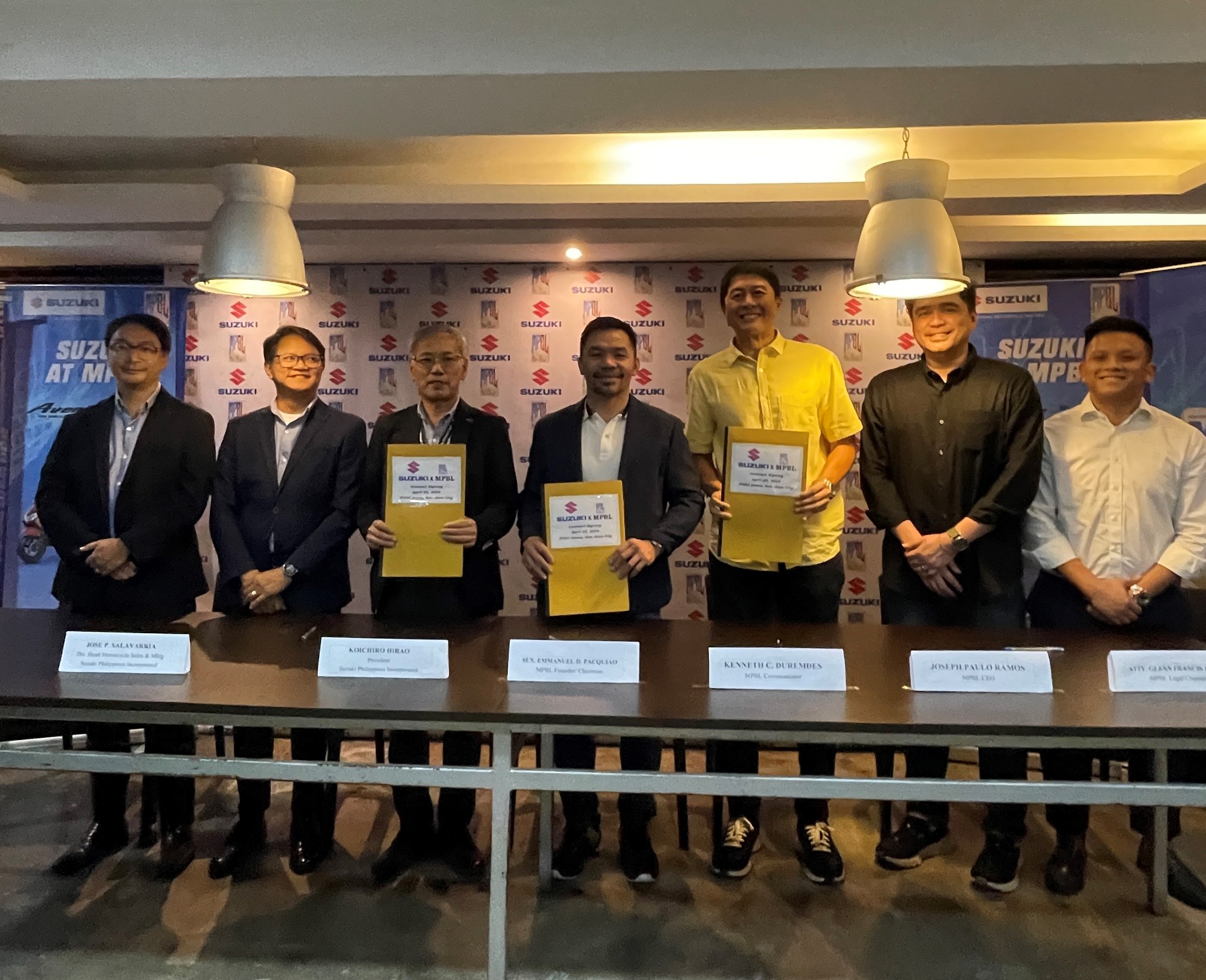
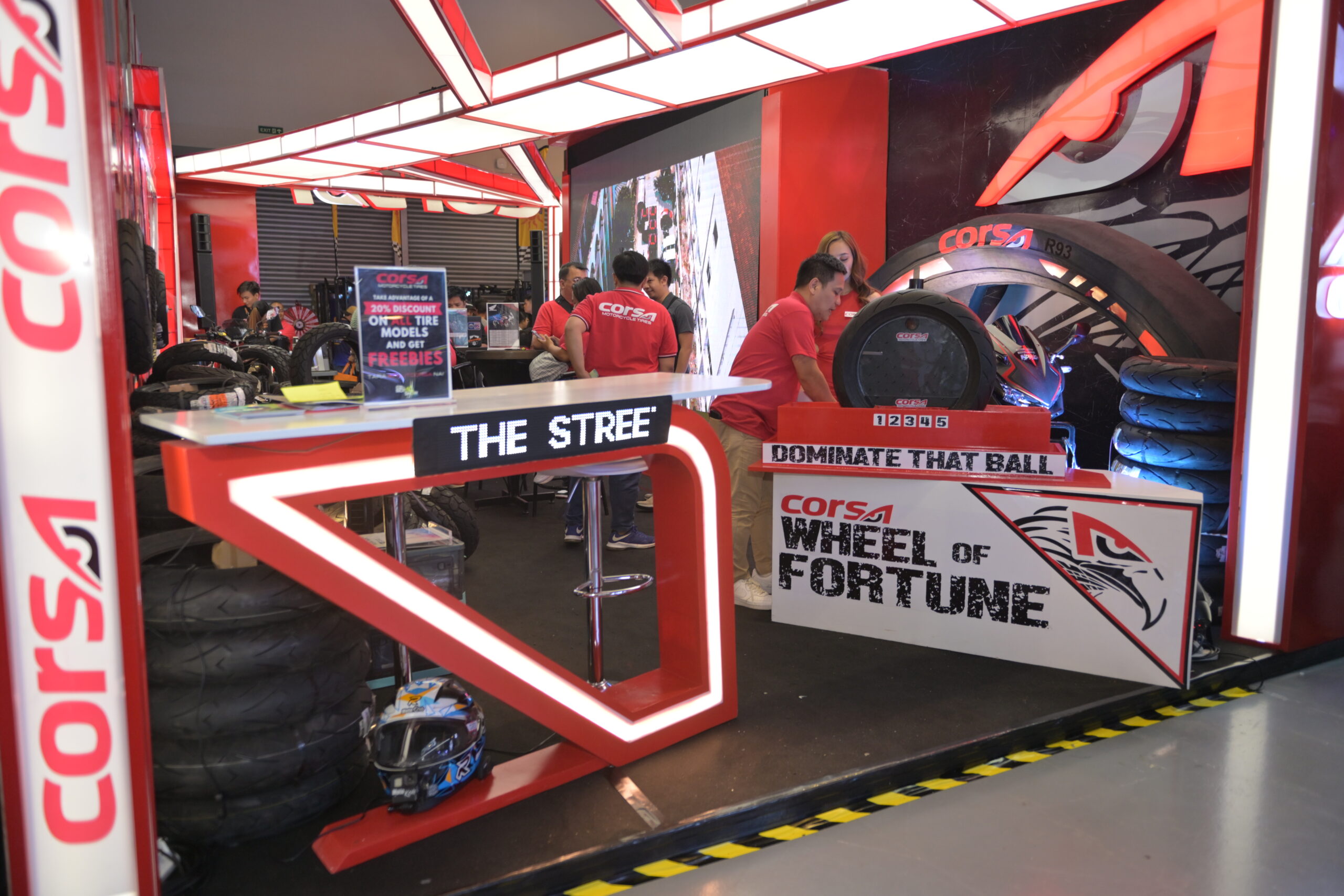



 ×
×
0 comments